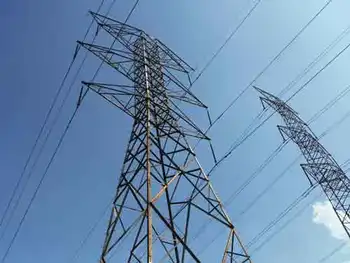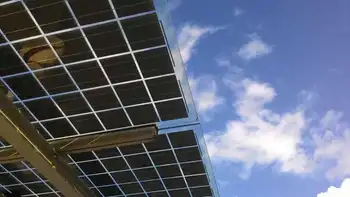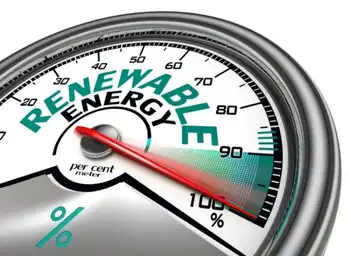ChinaÂ’s renewable curbs a boon to big players
By Reuters
CSA Z462 Arc Flash Training - Electrical Safety Essentials
Our customized live online or in‑person group training can be delivered to your staff at your location.

- Live Online
- 6 hours Instructor-led
- Group Training Available
Solar firm Yingli Energy Holdings, wind gear maker China High Speed Transmission and solar components company GCL-Poly Energy Holdings are likely to survive the reforms largely unscathed thanks to their strong balance sheets and massive production capacity.
For smaller companies, the government's plan to withhold approval of new investments and shut off funding for projects is likely to deliver a crushing blow for this part of the sector that makes up nearly 50 percent of the market.
"Sadly for many, the party's over even before it began," said KK Chan, chief executive of private equity firm Nature Elements Capital. "But this is something the sector needs now and is consistent with the government's long-term goal."
Earlier this month, China launched its latest attempt to rein in industrial overcapacity targeting key sectors, chief among them steel and cement.
The move, however, also included Beijing's first moves to restrict investment in the renewables sector. It comes after more than a dozen companies piled into wind equipment and polysilicon-making projects, encouraged by state policies and cash perks launched early this year.
Despite its efforts, Beijing's hard-line stance on expansion is unlikely to end the industry's struggle with collapsing prices and massive overcapacity.
"Capacities at factories are just so huge, China could easily supply all of the world's expected solar demand next year," said Wendy Wang, analyst at Yuanta Securities (Hong Kong).
Renewable energy accounts for just a fraction of a percent of China's total electricity output. Coal-dependent China hopes to bring that up to 15 percent by 2020.
By the end of 2009, capacity at China's polysilicon firms will reach 52,200 metric tons, according to Yuanta.
That's equivalent to feeding solar power stations with a combined capacity of 8.0 gigawatts, which is sufficient to supply the energy needs of a country the size of the Philippines.
Global solar demand in 2010 is expected at just 7.0 gigawatts and the over-supply has hammered prices.
Spot prices of polysilicon have fallen to $63 a kilogram now, from its peak of over $400 in August last year and compared to global production costs around $30-50 kg.
Larger, better resourced and more efficient polysilicon makers such as GCL, LDK Solar Co and Renesola are expected to better withstand the slimmer margins than newer, smaller rivals.
Wind turbine prices have also slipped as combined capacity builds to hit an estimated 40 gigawatts this year, also far surpassing demand. China is estimated to add on average 10 to 15 GW of wind power yearly.
Xinjiang Goldwind Science and Technology Co and Dongfang Electric are among biggest of 70 Chinese wind turbine suppliers.
"The wind turbine market has become competitive arena this year and price pressure will increase in 2010," said KGI analyst Stephen Wang.
GCL-Poly Energy, Yingli Energy, and China High Speed Transmission remain top picks by many brokerage houses in the renewables sector, thanks to their strong output and a wider customer base which is helping boost margins.
Shares in these companies have risen over 70 percent this year.











